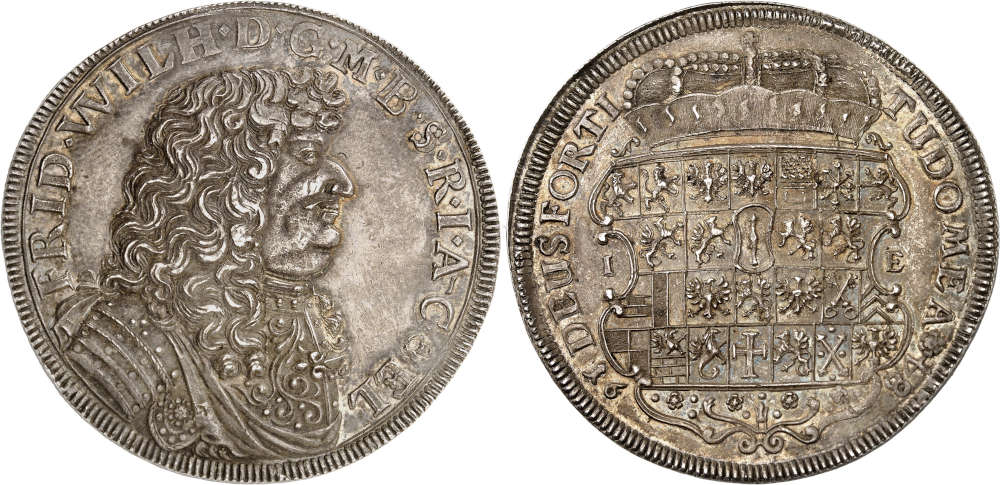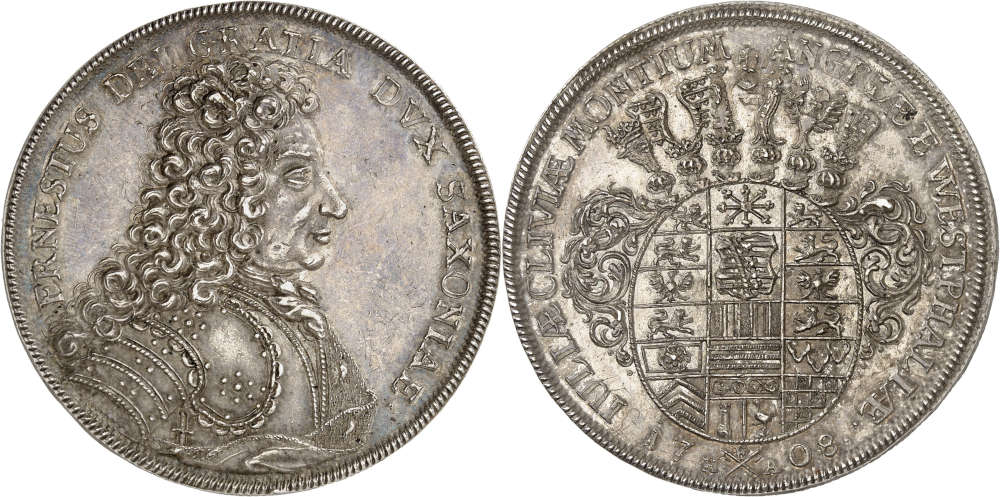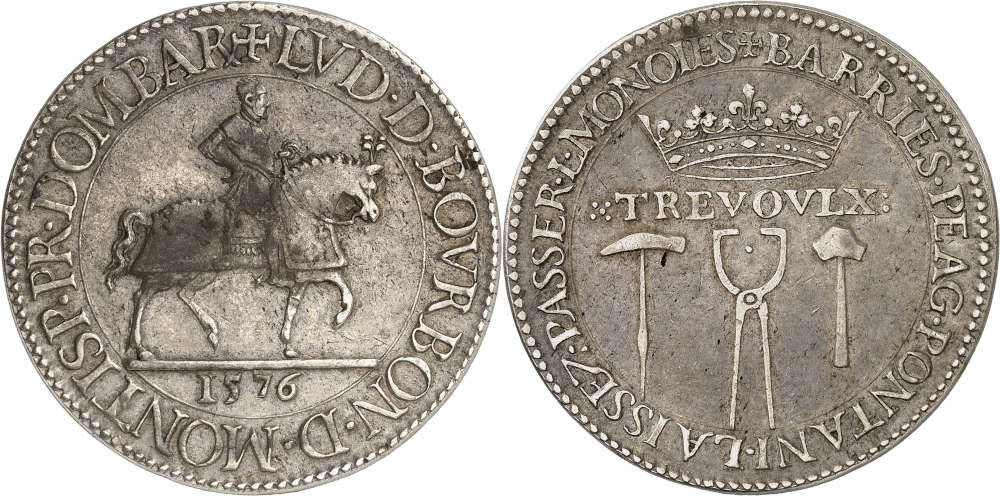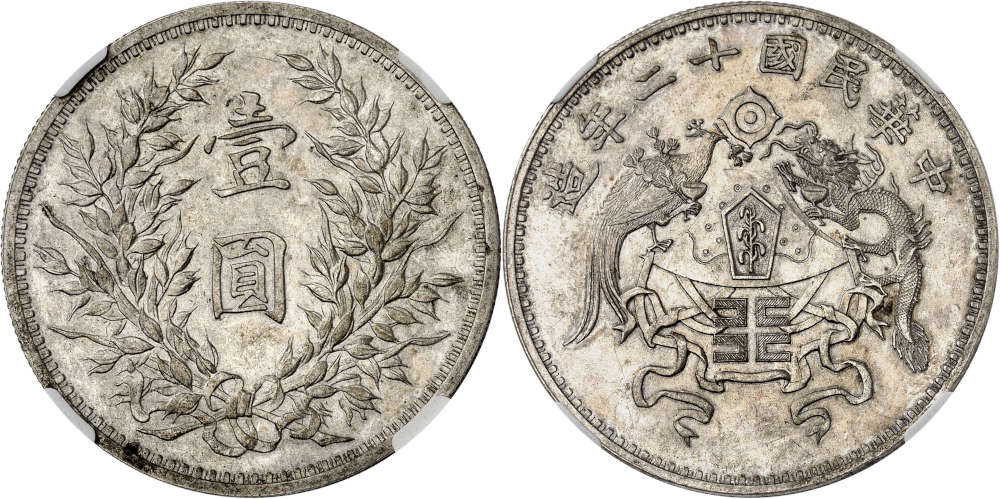Künker’s 400th Auction Sale: A Firework of Numismatics
Künker
Auction 400
Coins
1 February 2024
D-Berlin
770 lots with a total estimate of more than 7 million euros – do you even need to hear more to get excited about Künker’s 400th auction sale that kicks off the World Money Fair on 1 February 2024? Yes, you do! After all, the Osnabrück auction house will once again offer a selection of exquisite coins and medals that are hardly ever found on the market.
Selected Lösers from the Popken Collection
Künker’s auction 400 starts with another part of the Popken Collection. On offer are 39 lösers, including spectacular pieces such as a 1583 Julius löser minted in Wolfenbüttel, or Heinrichstadt as it was called at the time. Another magnificent example from this collection is a 1679 löser of three reichstalers, minted in Zellerfeld on behalf of Prince Rudolph Augustus of Brunswick Wolfenbüttel.
Rarities from the German States
Let us stay at the German states. The spectrum of rarities offered in this section ranges from Anhalt to Württemberg and also includes Austrian princes. No matter what field of the German states you are interested in, you can be sure that you will find a very special piece in this catalog. River gold ducats, multiple gold coins, rare and historically interesting medals, and spectacular talers: take your time to leaf through the catalog – you will find exciting pieces such as a showpiece of an extremely rare reichstaler of the Great Elector Frederick William of Brandenburg from 1684, an even rarer and earlier taler by William V of Jülich-Berg or a quadruple ducat by Simon Henry of Lippe, to name but a few examples.
French Showpieces
Next is the section of world coins, including a plethora of impressive pieces. They are all characterized by their rarity and outstanding quality. Furthermore, some of the pieces are of great numismatic significance or have a far-reaching provenance to show for themselves. The small series of French issues, for example, “only” contains about 30 lots. However, they include so many exceptional pieces that it is hard to decide which ones to include in this preview. We decided on a very rare variety of the double louis d’or of Louis XIII. The extremely fine piece was minted in 1640 in Paris. It shows an impressive portrait of the ruler who is known as the patron of the Musketeers in popular culture.
Our second example was created in the county of Dombes under the rule of Louis III de Bourbon-Montpensier, one of the great opponents of the Huguenots. He played an active role in the run up to Bartholomew’s Day massacre. Almost even more remarkable than the general on the obverse are the minting tools and the circumscription on the reverse, which explains that workers at mints can pass without paying taxes.
British Multiple Gold Coins
Five Guineas are among the most popular collectibles when it comes to British coins. Auction 400 presents a rich selection of these pieces. However, the highlight of this section was created a little later. It is a pattern for the 5-pound piece of 1820 with smooth edge. Only a total of 25 specimens were created of this pattern, most of which do not have a smooth edge but an edge inscription. Only two pieces are known of the smooth-edge patterns today!
Italy from Frederick II to Victor Emmanuel III
The small selection with Italian pieces also has many treasures to offer! From medieval grossi of exceptional quality to impressive Renaissance portraits and extremely rare pieces from the era of Napoleonic rule: these coins reflect Italy’s diverse and rich history, which makes the country one of the most popular tourist destinations to this day. There are also many coins on offer that were created after the unification and that can only be encountered on rare occasions. For example a piece from 1901. The Italian 5-lira pieces had to be melted down due to an intervention of France. Only 114 specimens escaped this fate. The king, who was a passionate coin enthusiast, made sure that the pieces were given to the most important coin collectors of the time.
Poland, Russia, Czechia, Transylvania
By tradition, many coin dealers and collectors from Eastern Europe travel to Berlin to participate in Künker’s auction sale. They can look forward to a rich offer that goes far beyond what is usual. Be it Poland, Czechia, Transylvania or Russia – the coins and medals on offer from these countries are among the great rarities of numismatics.
Let us begin with an example from Poland, a gold medal by Sigismund III Vasa, the Swedish king on the Polish throne. The wonderful medal created in the late Renaissance period depicts the baptism of Jesus in the Jordan River on the reverse. This motif was a unique compromise for the ruler, who governed Protestant Sweden and Catholic Poland at the same time.
The two examples from Russia that will be presented here are among the rarest pieces of Russian numismatics. The 1801 ruble is a pattern from St. Petersburg. Regarding its fineness, the 37 1/2 rubles from 1902 exactly corresponded to 100 francs of the Latin Monetary Union. Only 225 specimens were issued to be used as gifts.
There is a lot on offer for Czech collectors, including numerous gold coins from Czechoslovakia as well as a royal d’or by John of Luxembourg from 1337. The blind king, who fell at the Battle of Crécy, was the father of Charles IV. This royal d’or is the only specimen on the market.
Let us round off our trip to Eastern Europe with a 10-fold ducat by Sigismund Rákóczi, the flamboyant figure of Transylvanian history that owed his title both to the recognition of the imperial court and that of the Ottoman sultan. Particularly remarkable is the weapon the hero of the Long Turkish War carries on this coin: a mace.
Far East and the USA
Let us conclude this auction preview with a glance at the specimens from “overseas”. Connoisseurs will be delighted by the small run of rare and exquisite Chinese coins. A Japanese oban from the Man’en era will also be met with great interest.
The auction will be rounded off by a small series of US gold coins.
In the context of the Berlin auction sale, on 5 and 6 February 2024 Künker’s eLive Premium Auction 401 will be held showcasing coins and medals featuring “multiple portraits” from a private collection in Westphalia.
To order a catalog contact Künker, Nobbenburger Straße 4a, 49076 Osnabrück; phone: +49 541 / 962020; fax: +49 541 / 9620222; or via e-mail.



























